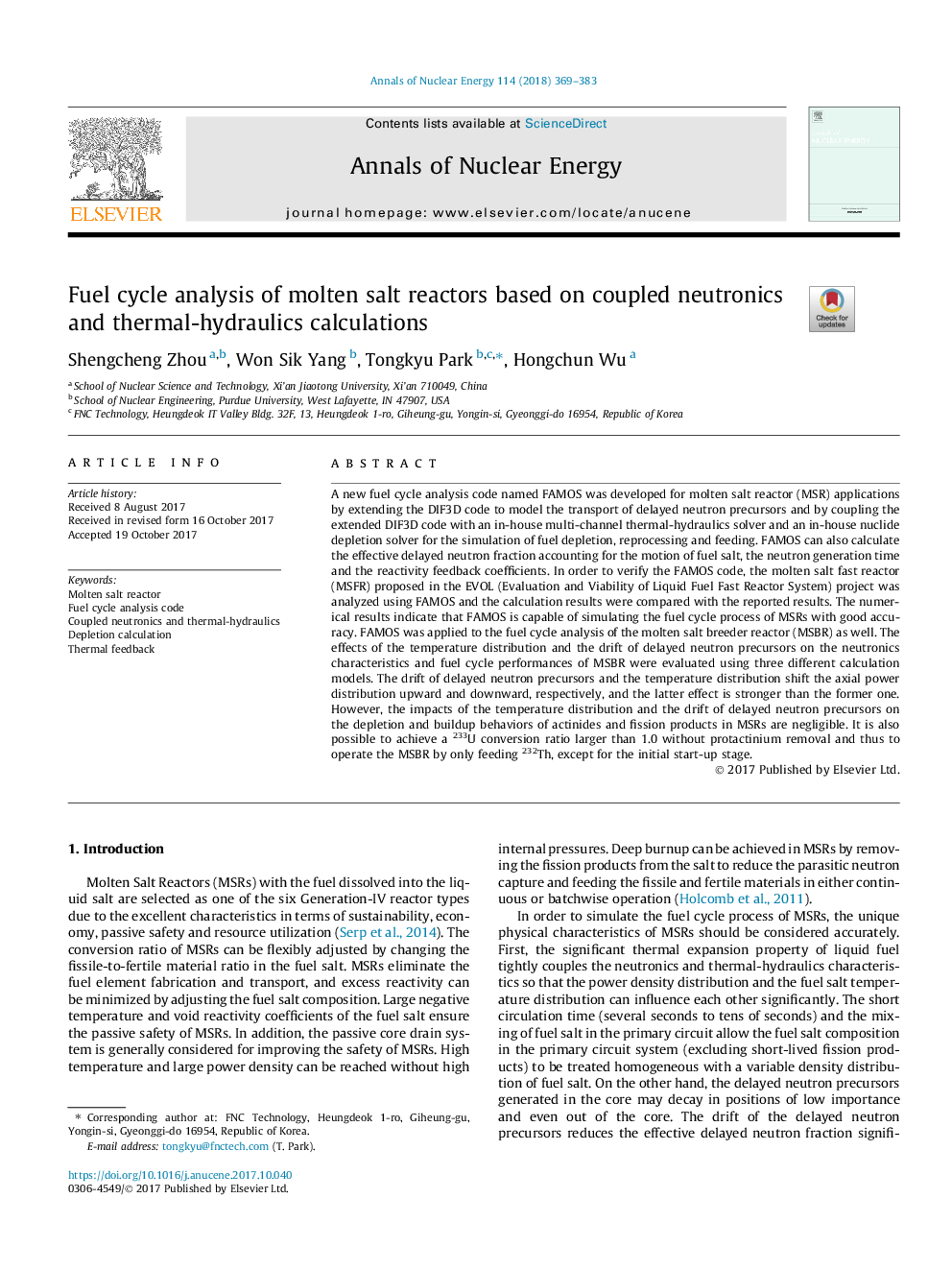| Article ID | Journal | Published Year | Pages | File Type |
|---|---|---|---|---|
| 8067177 | Annals of Nuclear Energy | 2018 | 15 Pages |
Abstract
A new fuel cycle analysis code named FAMOS was developed for molten salt reactor (MSR) applications by extending the DIF3D code to model the transport of delayed neutron precursors and by coupling the extended DIF3D code with an in-house multi-channel thermal-hydraulics solver and an in-house nuclide depletion solver for the simulation of fuel depletion, reprocessing and feeding. FAMOS can also calculate the effective delayed neutron fraction accounting for the motion of fuel salt, the neutron generation time and the reactivity feedback coefficients. In order to verify the FAMOS code, the molten salt fast reactor (MSFR) proposed in the EVOL (Evaluation and Viability of Liquid Fuel Fast Reactor System) project was analyzed using FAMOS and the calculation results were compared with the reported results. The numerical results indicate that FAMOS is capable of simulating the fuel cycle process of MSRs with good accuracy. FAMOS was applied to the fuel cycle analysis of the molten salt breeder reactor (MSBR) as well. The effects of the temperature distribution and the drift of delayed neutron precursors on the neutronics characteristics and fuel cycle performances of MSBR were evaluated using three different calculation models. The drift of delayed neutron precursors and the temperature distribution shift the axial power distribution upward and downward, respectively, and the latter effect is stronger than the former one. However, the impacts of the temperature distribution and the drift of delayed neutron precursors on the depletion and buildup behaviors of actinides and fission products in MSRs are negligible. It is also possible to achieve a 233U conversion ratio larger than 1.0 without protactinium removal and thus to operate the MSBR by only feeding 232Th, except for the initial start-up stage.
Related Topics
Physical Sciences and Engineering
Energy
Energy Engineering and Power Technology
Authors
Shengcheng Zhou, Won Sik Yang, Tongkyu Park, Hongchun Wu,
